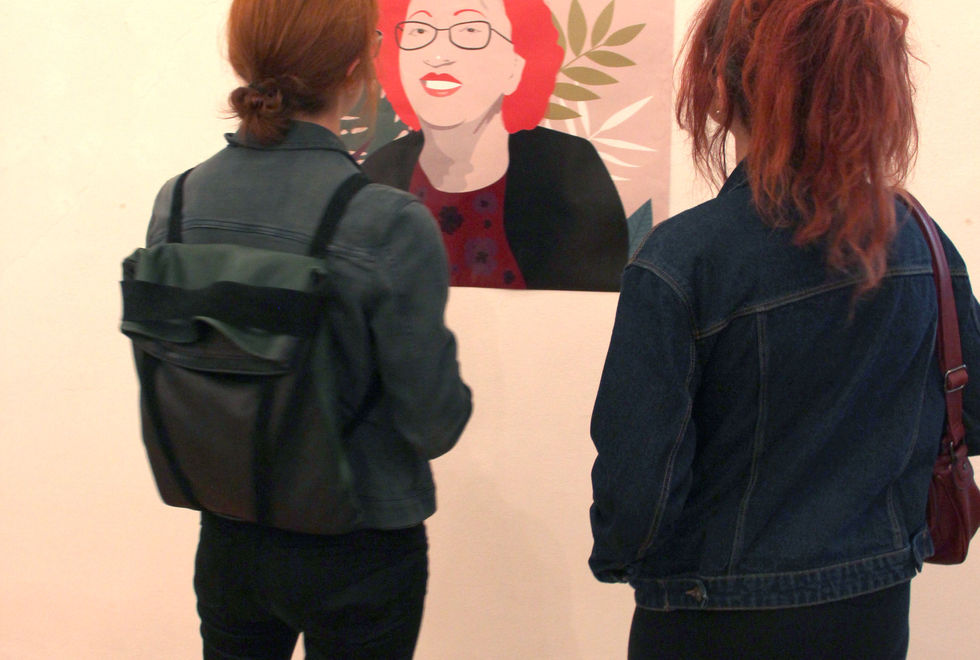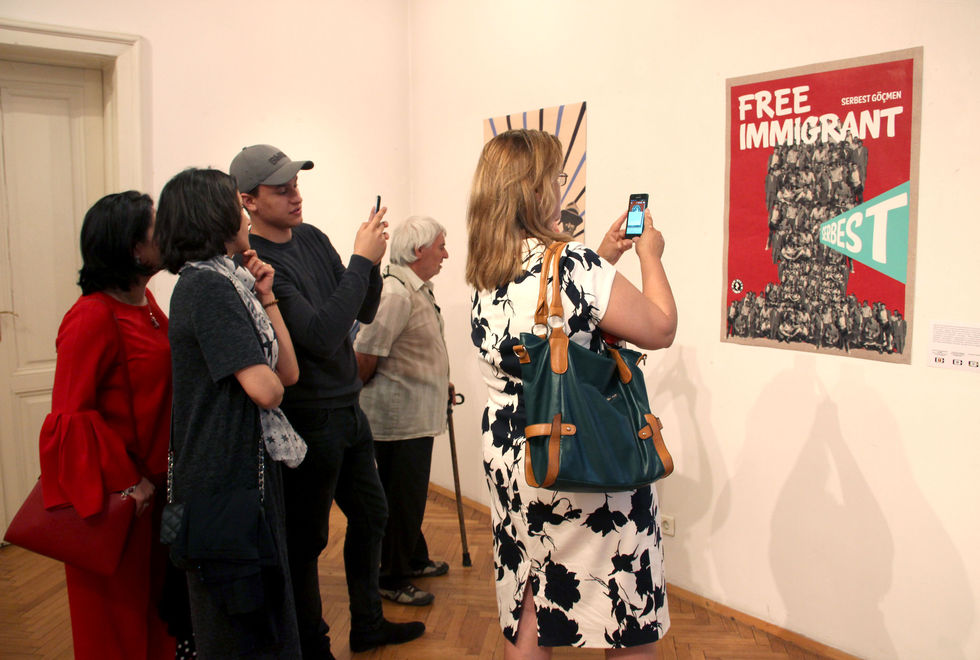ARE YOU AN IMMIGRANT TO?
Year 2018
Art Installation - participatory art
As a reaction to the world refugee crisis, especially the Syrian refugees who passed through Macedonia on the so called “Balkan Route”, the academic artist Taleski Darko, creates an artwork entitled Help the refugees. In 2015 there was a huge influx of refugees going through Macedonia illegally and since the government offered no help in terms of transport or anything else they were forced to follow the railway tracks late at night. As a result of their lack of knowledge of the terrain many unfortunate accidents happened.
Taleski’s Art, can be freely defined as socially engaged because he reacts to characteristic and unusual situations which define human condition and raises his voice for the less fortunate and helpless people. Wanting to express his revolt because of the hostile environment that surrounds this innocent people, he created his one- minute video, shown in the Contemporary Art Museum in Taiwan (shortened MOCA)
However, the ideas and the concepts that can help the migrants still encourage the artist to create. He tried to capture the extremely complicated issue of MIGRATION, in his exhibition “Are you a migrant too?”
Taleski tries to retell the personal history of several artists from his native Prilep, thus hoping to bring the subject closer to every one of us. His main motive is to awaken and ignite the empathy and compassion of his fellow citizens, who might feel threatened of scared of the refugees and migrants, reminding them via collages of photographs, written testimonies, letters and reports of the lives of our close friends and relatives who were forced or have decided to leave their country willingly.
In remembering the moments spend with is grandfather, the artist Taleski showed interest about the stories of his ancestors. He reacted emotionally at the absence of the people, his close and not so close relatives who had left, while looking at their photos. Those photographs that evoked vivid memories in his grandfather, he used them as a prompt to retell their life stories over and over again, so they are heart and remembered by the child who will remember and pass them on to the next generation. The stories provoked different emotions, images and assumptions in the creative mind of the child. Amongst all the stories the one that left the greatest impression was the one about his grandad’s uncle who had left and moved to Bulgaria. After a while he had sent a photo of his family, his wife and two daughters. One of the daughters, feeling the need to connect and introduce herself to the family she had no chance of meeting or knowing, had sent a photograph of herself as a successful actress in the 30ies.
After the failure of the Civil War in Greece the exodus of ethic Macedonians from Northern Greece begins, taking them to Yugoslavia and other socialist countries. In the changeable and politically uncertain climate of the fifties, begins the life story of the artist Vasko Kostov, born in the Northern Greece. His history is presented on a map where the most important places for the family are marked and highlighted. They too were in search for a better and safer conditions for building a place they would call home. It took Vasko 5 years to get to Prilep. Before he even began his schooling and prior to the beginning of the Civil War his family had left their home in Northern Greece and travelled to Sofia, Bulgaria by train. They were moved and placed in Plovdiv but because of the hostility of the Plovdiv people and his father being sensitive and precocious he moved the family to Lopatica, a village about 50 km from Prilep. Vasko finished first grade there. From there they moved to another village near Bitola. After the end of the World War II, Yugoslavia moved the migrants in Vojvodina, where the German army used to be placed and he finishes second grade there. From there they moved to Tetovo, where Vasko finished 3 grade.
They moved to Negotino in a village for migrants knows as Crveni Bregovi, at the banks of River Vardar. Eventually they moved to Prilep where Vasko finishes 5th grade and his Art teacher advices and guides him towards the realms of Art.
Another wave of migration is also the immigration of the Muslim population from Macedonia and their moving to Turkey in the 1950ies and 1960ises. The life stories of his ancestors are engraved in the memory of the artist Ferdi Bulut, his relatives who left their native village. Yugoslavia signed an agreement with Turkey in 1953 and people left in search of better life. The communism arose then and people’s properties were forcefully taken from them and become the state’s possessions. Some people emigrated because of that too. The inhabitants of the village Kanatlarci sold their entire property and possessions and decided to leave for Istanbul or Izmir travelling from Bitola by train. It was forbidden that the immigrants take gold or money but they were allowed to bring household items. They had to hide some money in home-baked bread or in their clothing. Ferdi’s uncle volunteered to leave the family and try to build a good life. Despite all the hurdles many have succeeded in this.
After Macedonia became officially independent state in 1991 and the transition period began the socio- economical turmoil started and is still ongoing. The disadvantaged situation caused many people to migrate to Western European countries as well as America and Australia. Some moved to stay with relatives but many young highly-skilled and qualified people moved to work and live there (brain – drain process) .
The analysis of modern migration understands the across the border mobility of people: seasonal workers, students, part-time workers, business people, entrepreneurs, members of foreign companies and state firms. The life path of Jasmina Runeska is related to the story of people who left their country once this happened. Her only brother, when only 17, left for America and came to visit once after 10 years. Trying to describe their unique sister-brother connection Jasmina uses different objects from their childhood.
Today, in the era of technical and technological advancement, migrations are an inseparable part of everyday life, especially because of the easy and fast methods of communication and travel. This makes the changes even more evident and dynamic. Trying to find their way, in hope of better social structure and fairer non – nepotistic system, where the workers are respected and acknowledged, the two children of the artist Lepa Milosevska also left their home in Macedonia. In 2010 her son who is a doctor leaves. In 2015 her daughter -an architect- leaves as well. They both move to Germany where they started families and new life. Their interaction and relation are best retold by the photographs that witness their meetings. The parents statements are included as well.
Vikotoria Dimeska
Art Historian





















































